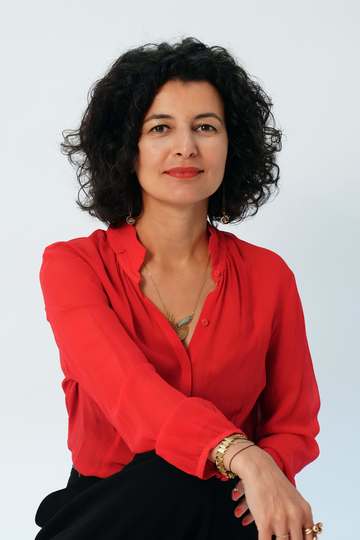To coincide with this year’s Frieze Sculpture exhibition, curated by Fatoş Üstek, Phin Jennings sat down with her to speak about public art, accessibility and what it means to expand our notions of sculpture.
By Phin Jennings | 13 Oct 2023
During Frieze Sculpture, the public exhibition of outdoor art that coincides with London’s biggest art fair, Regent’s Park’s English Gardens transform for a month. This month, Fatoş Üstek was tasked with orchestrating the transformation, bringing works by 21 artists – ranging in nature from the subtle to the colossal, from the scattered to the monolithic – into the park. When I meet with her it is the evening of the final day of the project’s installation. Installing public sculpture sounds like tiring work, but she seems chipper and is eager to tell me about how she navigated the project.

“I was interested in creating a sense of humour and play in the interplay between the artworks.” We are discussing her placement of Josh Smith’s Friend next to Fat Man with Flowers 2 and Man Kneeling with Flowers by Catharine Czudej. Smith’s sculpture is a taller-than-human bronze rendering of the recognisable figure of the grim reaper. Metres away, seemingly unaware of the “spectral entity”, as Üstek puts it, looking over them, Czudej’s figures look like balloon models and go about their bumbling business with a carefree optimism. Juxtapositions like this make the presentation feel like a well-considered exhibition. Really, it’s much more than that.
“I took expandedness as a methodology,” she tells me, “I focused on bringing forward artistic practices that work with expanded notions of sculpture”. This idea of expansiveness repeats throughout the presentation; for the first time, it takes up the whole English Gardens, for example. Many of the sculptures themselves also expand the medium’s definition, moving beyond and subverting the polished bronze standard for public sculpture. Ayşe Erkmen’s Model for a Moss Column, is a more literal example, she says: “the entire piece is covered by moss which will be changing, growing and expanding throughout the duration of the exhibition.” Elsewhere, Monument for the 21st Century by Gülsün Karamustafa expands the idea of sculpture beyond the physical world, presented as an augmented reality artwork which visitors can view using their mobile phones. Hans Rosenstrom’s Unfolding Silence incorporates a soundscape, a medium appearing at Frieze Sculpture for the first time this year.
Also expanded is the pool of artists from which Üstek curated the exhibition. “I didn’t want to do it with the usual suspects,” she says. Many artists on show are represented by galleries who haven’t participated in Frieze before and, for some, this represents their first public commission. She shares with me a story of a curator friend calling her when the line-up was published: “I don’t know more than half of the names on the list… Well done!” In an art world that feels increasingly dominated by a small number of brand-name artists and galleries, it feels good to see newer and less well known names accessing the sculpture park.
That sentiment is carried from artists to viewers. Üstek explains that she wants everyone who encounters the exhibition to feel a part of it; “Since we opened the show, I don’t feel like it’s my show […] it’s the show of all the artists and mine, as well as everyone who’s going to engage with it.” She has made sure that there are plenty of ways to do that. This is the first year that guides will be available for viewers to ask questions of, and also the first year that Frieze Sculpture is presented alongside a programme open-to-all, curator-led tours and nighttime walks, online artist talks and performances. The idea, she tells me, is to demonstrate to the broader public that “you don’t have to be in a controlled environment” to engage with art and that “it’s not just what the curator says” when it comes to how you can experience it. Anyone is welcome, and the tools and opportunities are provided for each visitor to experience and learn about the work in their own way.
She tells me that she saw a class of schoolchildren gathering around Holly Stevenson’s ceramic installation The Debate, excitedly circling its two central duck-like figures and buzzing with conversation about what it was that they were looking at. To me, this image encapsulates what it is to expand our notion of sculpture. An artwork is activated when someone engages with it, and each viewer inevitably brings their own point of view to this experience. The more different people who encounter a work, the richer in meaning it becomes; the further it expands.



